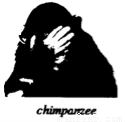题目内容
She'd lived in London and Manchester, but she liked ______ and moved to Cambridge.
A. both B. neither C. none D. either
B
【解析】
试题分析: A;两者都;B两者都不;C三者或以上都不;D两个中的任意一个。根据句中出现的两个地点London和Manchester可知此处指两者,排除C选项;而根据but后的内容可知她两个城市都不喜欢,故答案选B。句意:她在伦敦和曼彻斯特住过,但是这两个城市她都不喜欢,所以就搬到了剑桥。
考点:考查不定代词词义辨析及语境理解。

练习册系列答案
相关题目

 that furthered the down-cutting process and deepened the canyon.
that furthered the down-cutting process and deepened the canyon.  at the process has happened there, too, say many other researchers.
at the process has happened there, too, say many other researchers.